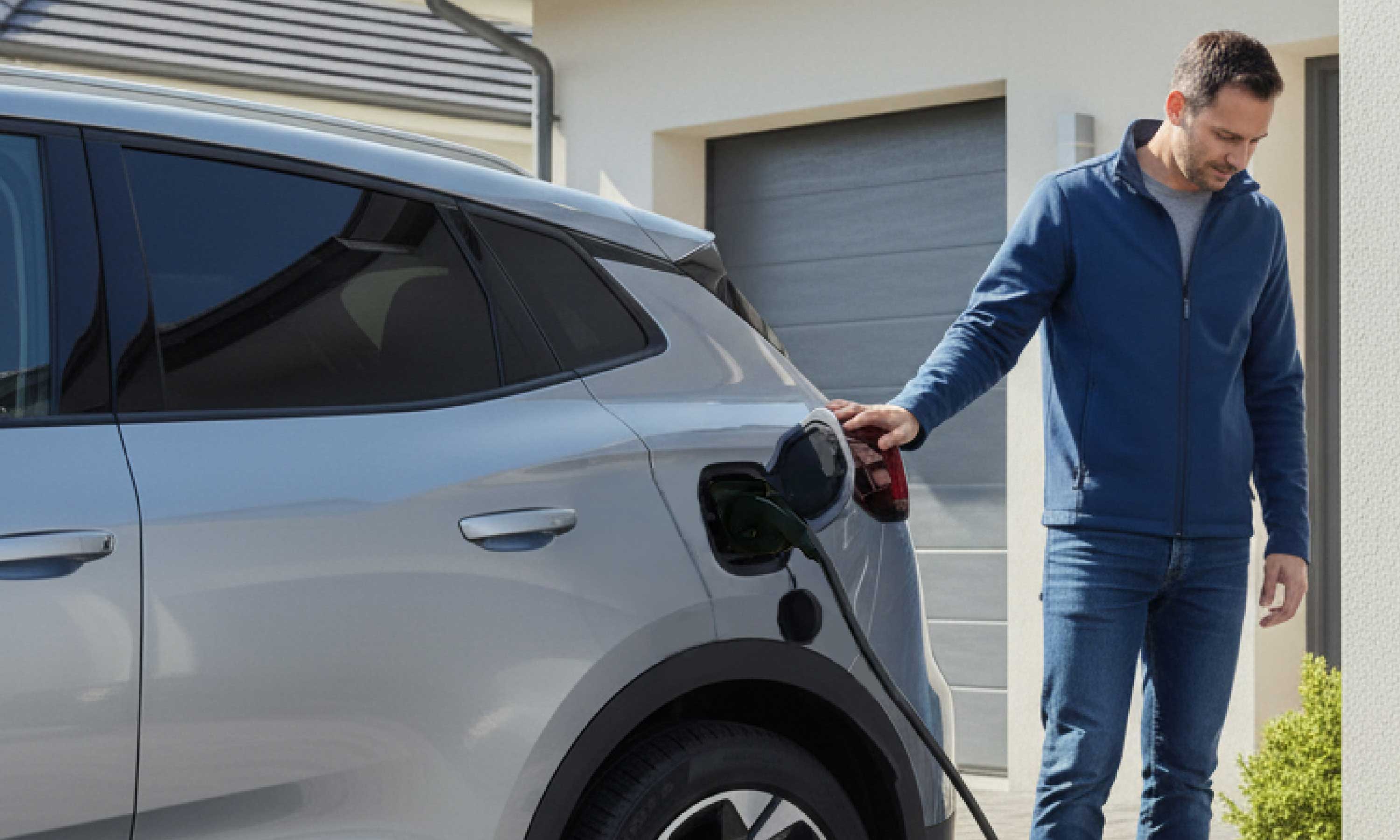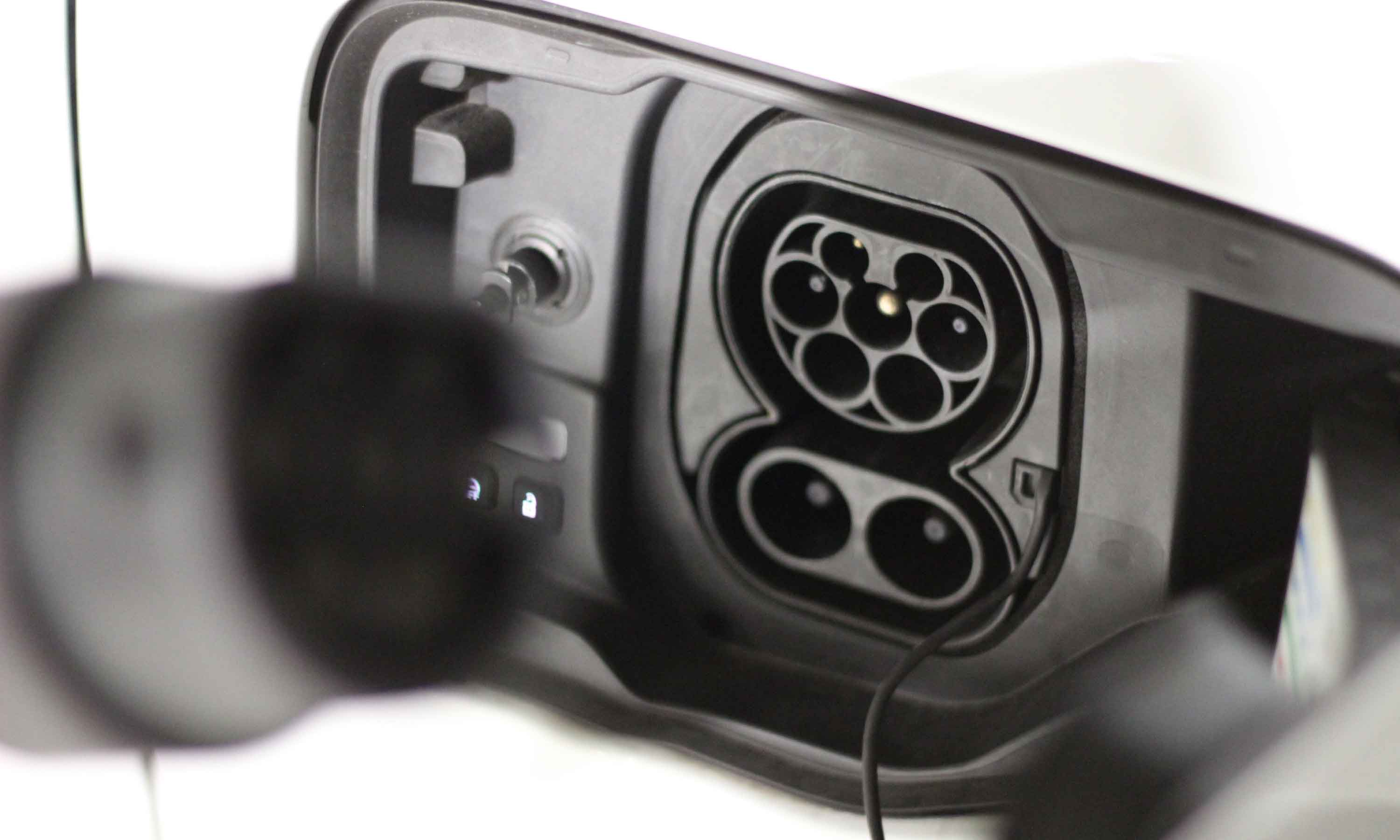Charging an electric car may seem complex at first, but today there are simple, accessible, and safe solutions available, whether at home, on the road, or in the city. In this guide, we explain how to efficiently charge your vehicle based on your usage, equipment, and budget.
What are the different charging methods?
Depending on your parking location and needs, you can recharge your electric car in several ways:
1. Home charging: simplicity and convenience
This is the preferred method for everyday use, especially at night. Two main options:
- Reinforced socket (e.g. Green'up): safer than a standard socket, it allows charging up to 3.7 kW.
- Wallbox charging station: faster (up to 22 kW) and programmable, ideal for regular charging at a controlled cost.
2. Charging at public charging stations: flexibility and accessibility
Available in town or in parking lots, these charging stations deliver from 7 to 22 kW in alternating current (AC) or up to 150 kW in direct current (DC) for the fastest ones.
👉 They generally require an RFID card or a mobile application to start charging.
3. Fast charging on the motorway: for long journeys
Ideal for travel, these ultra-fast charging stations (up to 350 kW) allow you to recover 80% of the battery in about 30 minutes.
⚠️ Check your vehicle's compatibility: not all batteries can support these high power levels.
What equipment is needed to charge an electric car?
To safely charge an electric vehicle, simply plugging in a cable isn't enough: some equipment is essential, while other items are merely convenient. Here's what you need to consider depending on your situation.
The charging cable that's right for your vehicle
The majority of electric vehicles in Europe use:
- A Type 2 cable for alternating current (AC) charging
- A CCS Combo cable (Type 2 + DC pins) for fast DC charging
💡 For safety reasons, the cable used at fast charging stations is directly attached to the station. Therefore, it is neither necessary nor possible to purchase one separately. However, for home charging or charging at public AC stations, check that the cable is included with your vehicle, as some manufacturers offer it as an option.
A reinforced socket or a charging station
At home, you have two main options:
- A reinforced socket like the Green'up: easy to install, sufficient for overnight charging.
- A wallbox: faster, safer, and often connected (programming, consumption monitoring, etc.).
💡 For regular use, a 7 kW charging station currently offers the best compromise between power, convenience, and installation cost. Discover our collection of 7 kW charging stations, compatible with most electric vehicles on the market.
An access card or a mobile application

To recharge at a public charging station, you generally need a means of authentication:
- An RFID card (such as Chargemap Pass, TotalEnergies Charge+ or Ulys) to start charging on compatible networks.
- Or a mobile application that allows you to activate charging, locate charging stations and view real-time rates.
🔌 Drivers can now take advantage of “Plug & Play” mode, an innovation that allows certain charging stations to automatically recognize the vehicle as soon as it is plugged in. Charging then starts without a card or any other action required, a feature currently limited to certain models and operators, but expected to become more widespread.
⚠️ Some terminals are not compatible with all cards. Plan to have at least two payment options available.
Charging station/vehicle compatibility needs to be checked
Not all electric vehicle charging stations deliver the same power or current types. Before charging, make sure you:
- that the connector is suitable
- that the power does not exceed the capacity accepted by your vehicle
How long does it take to recharge an electric vehicle?
The time required to recharge an electric car depends primarily on three factors:
- Battery capacity
- The power of the terminal or socket
- The initial charge level and the limit accepted by the vehicle
Here is an overview of average charging times according to different types of connections:
| Type of recharge | Power | Estimated duration |
|---|---|---|
| 🔌 Reinforced grip | ~3.7 kW | 8 to 10 a.m. |
| 🏠 Wallbox | 7.4 kW - 22 kW | 4 to 6 a.m. |
| 🚗 Public AC charging station | 7.4 kW - 22 kW | 4 to 6 a.m. |
| ⚡ DC Fast Charging Station | 50 – 150 kW | 30 to 90 min |
The higher the charging power, the shorter the charging time… but only if your vehicle can handle it. There's no point in choosing a 150 kW charging station if your car is limited to 50 kW!
What is the cost of an electric vehicle charging?
The price to charge an electric car varies depending on the charging location, the supplier, the time of day… and of course, the capacity of your battery. Here's how to estimate your costs in different scenarios.
Home charging: the most economical solution
Home charging is often the most financially advantageous, as it is based on the regulated tariff or the contract with your electricity supplier.
Here's how to estimate your costs:
- Average price: between €0.15 and €0.25 / kWh
- A full charge of a 50 kWh battery costs approximately €8 to €12.
💡 Tip: Check with your provider about the options they offer. Some plans are specifically designed for electric vehicle owners and include convenient time slots for overnight charging.
Public charging stations: be aware of variable rates
Charging your electric car at a public charging station can be convenient… but also more expensive than charging at home.
Pricing depends on the type of billing:
- Per kWh: between €0.40 and €0.79/kWh
- Per minute: risky if charging is slow
- Package or subscription: sometimes advantageous if used frequently
Let's imagine a 50 kWh battery that needs to be fully recharged:
| Charging station | Average price | Estimated cost |
|---|---|---|
| 🏠 At home | €0.18/kWh | ~€9 |
| ⚡ Public fast charging station | €0.50/kWh | ~€25 |
| ⏱ Charging station charged by the minute | €0.40/min for 30 minutes | ~€12 |
👉 As you can see, the differences can be significant, especially if you frequently top up away from home. It's best to check the rates before starting a session, either via an app or your top-up card.
How to charge your car safely?
Charging an electric car is a simple operation, but it must be carried out safely to avoid any risk of overheating, short circuits, or accidents. Here are the best practices to follow.
- ❌ Never use a standard extension cord: they are not designed for long loads and can overheat.
- ✅ Have a charging station or reinforced socket installed by an IRVE professional, with appropriate electrical protection.
- 🔍 Regularly inspect your cable and plug: no wires should be damaged, overheated or deformed.
- 🟢 Always choose reliable charging stations: CE marked, maintained, installed by known operators.
Should we prioritize charging at home or at a public charging station?
The choice between home charging and public charging stations depends on several factors: your driving habits, your type of accommodation, and your budget. Each solution has advantages and limitations.
Home charging: autonomy and everyday savings
- ✅ Ideal for daily commutes
- ✅ Nighttime charging, programmable, cheaper
- ❌ Requires installation (reinforced socket or wallbox)
- ❌ Less practical if you live in a condominium
👉 Ideal for: daily commutes, individual homes, regular drivers.
Public charging: flexibility and long-distance mobility
Charging at a public charging station is essential if you cannot install equipment at home or if you travel frequently.
- ✅ Access to fast charging stations on the go
- ✅ No installation required
- ❌ Higher and variable prices
- ❌ Availability sometimes uncertain
👉 Useful for: occasional travel, residents in condominiums without private access, long journeys.
FAQ – Your questions about charging an electric vehicle
🌧️ Can you recharge in the rain?
Yes, it's safe. The terminals and connectors are designed to work outdoors, even in wet conditions.
🔌 Can any terminal be used?
No. You need to check the connector compatibility (Type 2, CCS…) and the power accepted by your vehicle.
🏠 Are there any subsidies available for installing a charging station at home?
Yes. The government offers a tax credit and local subsidies that can be combined. Installation must be carried out by a qualified EV charging infrastructure professional.
🚫 What to do if a charging station is occupied or out of order?
Start by checking the availability of other nearby charging stations using an app like Chargemap. If the station appears to be faulty, contact the support number displayed on the station directly rather than scanning a QR code (some may be fraudulent).
The operator may ask for the charging station's identification number and, in some cases, resolve the issue remotely to restart the charging session. Few drivers are aware of this, but this step can prevent unnecessary waiting.




Bonjour
Je viens d’acheter ma VE, je suis super content…….
Mais pourquoi, en arrivant a la maison, quand je branche sur ma prise domestique le câble PSA de 3.8 kW, la voiture charge seulement a 6 km/h, soit a peine 1 kW ? ( J’ai un souffleur électrique de 3000w, il fonctionne très bien sur cette prise.)
J’ai essayé de changer de prise, idem, 6 km/h. !
Quelqu’un a t’il une solution ?
merci d’avance
Fred
Leave a comment